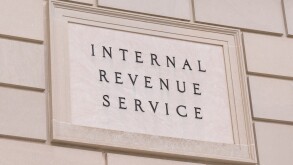The Supreme Court ruled 9-0 in favour of the government on both issues in Woods, holding that:
there is partnership-level TEFRA [Tax Equity and Fiscal Responsibility Act of 1982] jurisdiction to consider the appropriateness of a penalty when the partnership is invalidated for lack of economic substance; and
the 40% valuation overstatement penalty can apply in that setting on the theory that the basis of a sham partnership is zero and therefore the taxpayers overstated their basis.
The opinion, authored by Justice Scalia, is concise and appears to resolve definitively both issues that had previously divided the lower courts.
Partner-level jurisdiction
On the jurisdictional issue, the Court began by pointing to Code section 6226(f), which establishes partnership-level jurisdiction for “the applicability of any penalty . . . which relates to an adjustment to a partnership item.” Accordingly, the Court found, the question “boils down to whether the valuation-misstatement penalty ‘relates to’ the determination” that the partnerships were shams. On that point, the Court agreed with the government’s “straightforward” argument that “the penalty flows logically and inevitably from the economic-substance determination” because the trigger for the valuation overstatement calculation is the conclusion that a sham partnership has zero basis.
The Court rejected the taxpayer’s argument (previously adopted by the Federal and DC Circuits) that there can be no partnership-level determination regarding “outside basis” because some partner-level determinations are necessarily required to conclude that outside basis has been overstated. The Court found that this approach is inconsistent with TEFRA’s provision that the applicability of some penalties must be determined at the partnership level. If the taxpayer’s position were correct, the Court stated, it “would render TEFRA’s authorisation to consider some penalties at the partnership level meaningless”. The Court stressed that the partnership-level applicability determination is “provisional”, meaning that individual partners can still raise partner-level defences, but the partnership-level proceeding can determine an overarching issue such as whether the economic-substance determination was categorically incapable of triggering the penalty. In the Court’s view, “deferring consideration of those arguments until partner-level proceedings would replicate the precise evil that TEFRA sets out to remedy: duplicative proceedings, potentially leading to inconsistent results, on a question that applies equally to all of the partners”.
40% penalty
With respect to the merits issue of the applicability of the 40% penalty, the Court relied on what it regarded as the “plain meaning” of the statute. The text applies the penalty to tax underpayments attributable to overstatements of “value . . . (or the adjusted basis)” of property. Finding that the parentheses did not diminish or narrow the import of the latter phrase, the Court concluded that a substantial overstatement of basis must trigger the 40% penalty and that such an overstatement occurred in this case. Because the term “adjusted basis” “plainly incorporates legal inquiries,” the Court was unpersuaded by the taxpayer’s argument that the penalty applies only to factual misrepresentations of an asset’s value or basis. As we have previously noted (see here and here), both the taxpayer and an amicus brief filed by Professor David Shakow set forth considerable evidence that the intent of Congress in enacting the 40% penalty was to address factual overstatements, not overstatements that flow from legal errors. The Court, however, stated that it would not consider this evidence, which is found in legislative history and in the IRS’s prior administrative practice, because “the statutory text is unambiguous”.
In addition, the Court rejected the reasoning of the Fifth Circuit that the underpayment of tax was “attributable to” a holding that the partnership was a sham, not to an overstatement of basis. The Court instead adopted the reasoning of Judge Prado’s opinion in the Fifth Circuit (which had questioned the correctness of binding circuit precedent) that, “in this type of tax shelter, ‘the basis understatement and the transaction’s lack of economic substance are inextricably intertwined.’”
At the end of the opinion, the Court addressed an issue of statutory interpretation that has broader implications beyond the specific context of Woods. The taxpayer had relied on language in the Blue Book, and the Court stated in no uncertain terms that the Blue Book is not a relevant source for determining Congressional intent. Rather, it is “post-enactment legislative history (a contradiction in terms)” that “is not a legitimate tool of statutory interpretation”. The Court acknowledged that it had relied on similar documents in the past, but suggested that such reliance was a mistake, stating that more recent precedents disapprove of that practice. Instead, the Blue Book should be treated “like a law review article”— relevant only if it is persuasive, but carrying no special authority because it is a product of the Joint Committee on Taxation.
Alan Horowitz (ahorowitz@milchev.com) is a member of Miller & Chevalier in Washington, DC. This article first appeared on Miller & Chevalier’s Tax Appellate Blog on December 3.









